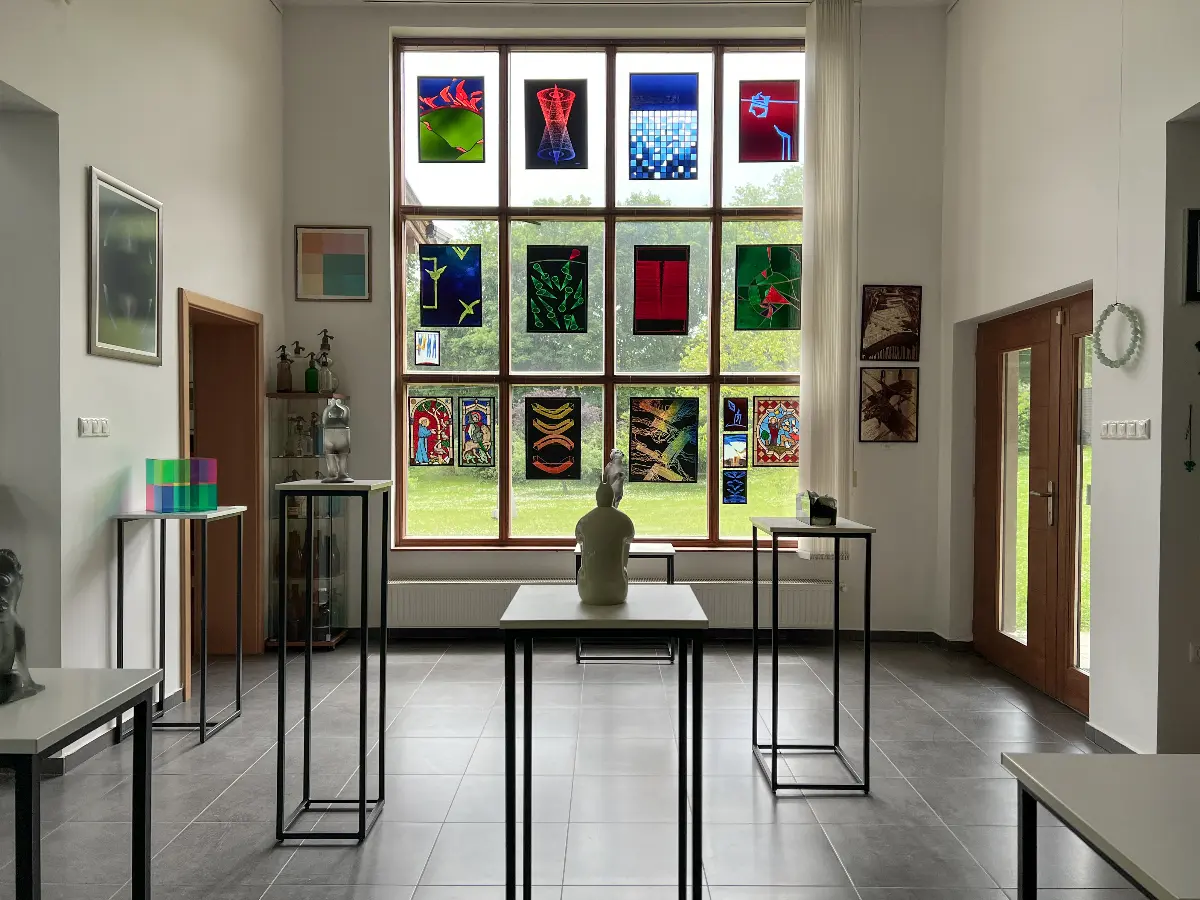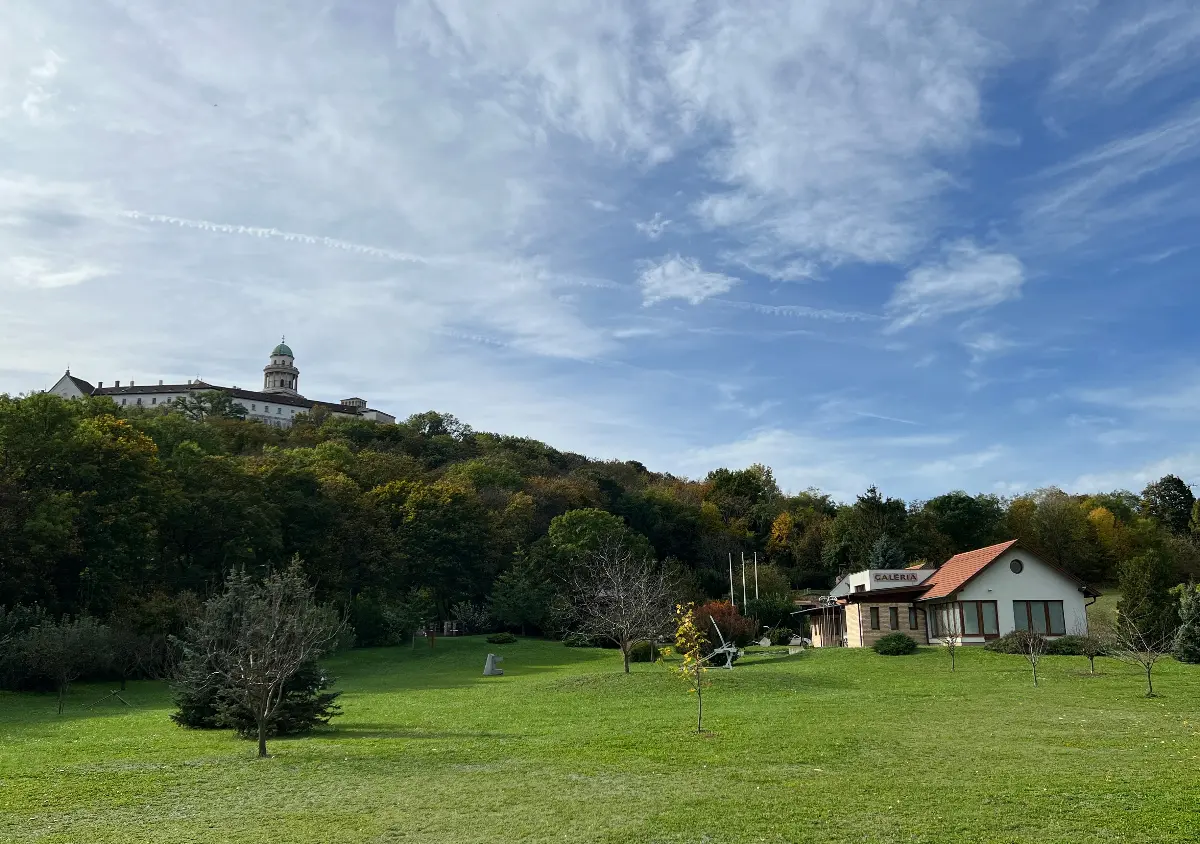
Helyszín címkék:
A cultural jewel in a historic landscape – The László Hefter Studio and Gallery in Pannonhalma
Hype&Hyper
History of the gallery
The studio and gallery, which has been operating since 2006, bears the name of its founder, László Hefter, a renowned Hungarian artist who came to Pannonhalma in the 1970’s and worked as a restorer at the Abbey for several years. During his time spent here, he fell in love with the atmosphere of the city and bought the land where the gallery is now located. The goal of creating a permanent showcase for Hungarian glass art was achieved eighteen years ago: the first meditative space was created, bringing together professionals and open to the interested lay public, where people are welcome to linger.

Art exhibitions and visual arts studio
The main aim of the gallery is to provide an opportunity for contemporary Hungarian glass artists to present their works to the public and to inspire those who are interested in this art. In addition to the permanent exhibition, which is constantly changing in terms of the material on display, the gallery is also hosting an exciting temporary exhibition in the lobby, currently featuring the work of applied artist Balázs Sipos.
Many of the objects on display are also for sale, hence the constant dynamism that sheds new light on glass as a material that has been used for thousands of years. While the airy exhibition space showcases contemporary glass plastics close to sculpture, the main profile of the studio and the Hefter family itself is glass related to architecture. This is the space where they tell the story of the work they are doing. On a lighted table, they show the meticulous procedure that objects undergo when they arrive for restoration: first the surface is examined to see what intervention is deemed necessary, and then lengthy documentation precedes the reconstruction.

Huge glass inserts, ornate painted coats of arms, spectacular glass ornaments and glass jewellery – the raw materials for which come from Murano – are made in the showroom. The workshop was also previously an exhibition space, but three years ago, it was transformed into an organically open creative space by the works of a large villa building in Budapest, offering visitors a complex cultural experience. You can also buy jewellery made here.
The present and future of glass art
The gallery’s programmes are not just for adults. They offer a wide range of museum education activities aimed at bringing everyone who comes here – especially young people and children – into direct contact with glass art, learning about its techniques, history and cultural significance. The sessions aim to develop artistic sensibility, encourage creative expression and enhance craft skills.

Brúnó Hefter, the son of the eponymous creator, László Hefter, who is also a glass artist, said the following about the present and future of this rare art form:
Flat glass, which is very technically demanding, is now meeting with transformed architectural trends. In this age of beautiful, clean and people-centred buildings, decoration is no longer really a requirement. It doesn’t even necessarily have to come back if we go down that route, it’s just a kind of rethinking of what these types of artists are doing, trying to find new focal points – which in many cases has already been done elsewhere.

Pannonhalma, or, interestingly, the settlement that was called Győrszentmárton until the 1960’s (only the abbey part was called Pannonhalma), is an outstanding religious and cultural sphere, which, if you enter, you can become spiritual, a kind of ‘zen’. As it has always been a prominent cultural centre throughout history, the wine region is a strong gastronomic point on the map. It hosts many gastronomic events and wine festivals, and a few years ago it was enriched with a special canopy lake that stretches over the trees, offering a unique view of the area.
Finally, in the spirit of our glass art tour, let’s head towards the city centre of Győr, towards the very ingenious and unique Jedlik chandelier. The huge, 365 kg, modern soda siphon fountain sculpture was made by László Hefter in 2011.






